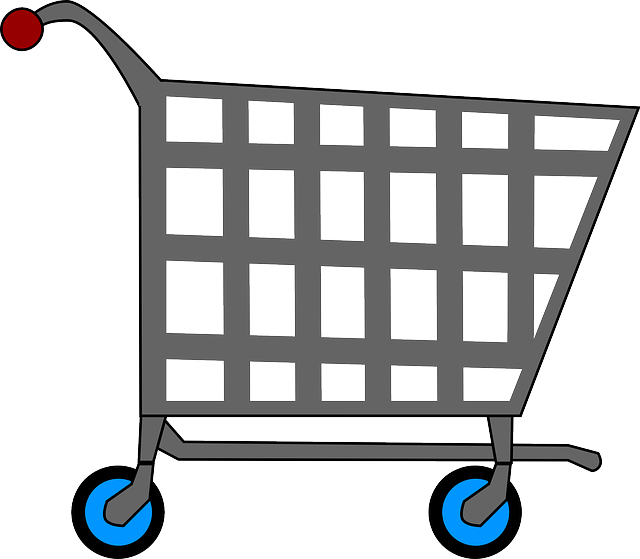An optimal e-commerce website design combines visually appealing aesthetics with functional elements like responsive design, intuitive navigation, and high-quality product visuals. Key features include clear descriptions, customer reviews, streamlined checkout processes, search functionality, filtering options, and personalized recommendations. Trust and engagement are built through optimizing loading speeds, ensuring secure transactions, integrating social media, and leveraging SEO strategies. A well-designed user experience (UX) converts visitors into loyal customers by understanding target audience behaviors and creating a memorable experience. Choosing the right e-commerce platform, such as Shopify or WooCommerce, is crucial for balancing business needs, budget, and technical proficiency. Visually stunning design, strategic branding, and mobile optimization are essential for standing out in the online marketplace. Secure payment gateways and diverse payment options enhance user trust and drive sales growth. Compelling content, SEO-optimized descriptions, and intuitive navigation fuse to captivate audiences and optimize the customer journey. E-commerce website design that incorporates SEO strategies, strategic keywords, and optimized product data climbs search rankings, boosts traffic, and increases conversions. Measuring success through KPIs like Conversion Rate, Average Order Value (AOV), and Customer Lifetime Value (CLV) ensures a well-designed site drives long-term profitability.
In today’s digital age, a robust e-commerce website design is the cornerstone of any successful online business. Understanding the intricate balance between user experience and visual appeal is crucial for engaging customers and driving sales. This comprehensive guide delves into the essential elements of e-commerce web development, from platform selection to SEO strategies. By exploring key areas like user interface, mobile optimization, payment security, content strategy, and performance metrics, businesses can create dynamic online storefronts that cater to modern shoppers’ expectations.
Understanding E-commerce Website Design: Essential Elements for Success

An effective e-commerce website design goes beyond a visually appealing interface; it’s about creating an intuitive, user-friendly experience that drives conversions. Key elements include responsive design for seamless access across various devices, a clean and organized layout to enhance navigation, and high-quality visuals that accurately represent products. Clear product descriptions, customer reviews, and easy checkout processes are also vital.
Search functionality, filtering options, and personalized recommendations further improve the user journey. Optimizing for fast loading times and ensuring secure transactions are essential for building trust with customers. Incorporating social media integration and blog content can enhance engagement while search engine optimization (SEO) strategies ensure visibility and attract organic traffic to the e-commerce website design.
The Role of User Experience in E-commerce Web Development

A well-designed user experience (UX) is pivotal for the success of any e-commerce website. It plays a crucial role in converting casual visitors into loyal customers by fostering ease and enjoyment during their online shopping journey. E-commerce web development services that prioritize UX often incorporate intuitive navigation, responsive design for seamless access across devices, and efficient checkout processes to reduce cart abandonment. A site that is user-friendly not only enhances customer satisfaction but also encourages repeat visits.
Beyond basic functionality, a strong UX incorporates elements like compelling visual design, clear product descriptions, and personalized recommendations to create a unique and memorable experience. By understanding the target audience and their behaviors, developers can tailor the e-commerce website design to meet user expectations, ultimately driving sales and fostering brand loyalty.
Choosing the Right E-commerce Platform: A Comprehensive Guide

Choosing the right e-commerce platform is a pivotal step in building a successful online store. The market offers numerous options, each with unique features and capabilities. Key considerations include your business needs, target audience, budget, and technical expertise. Popular platforms like Shopify, WooCommerce, and BigCommerce provide user-friendly interfaces, ready-made templates, and scalable solutions, making them ideal for startups and small businesses. On the other hand, custom-built e-commerce websites offer greater flexibility but require more time and investment.
When evaluating platforms, consider factors such as ease of use, security features, integration capabilities with third-party services (like payment gateways and shipping providers), and scalability to accommodate future growth. Additionally, understand the platform’s community support, availability of resources for learning and troubleshooting, and ongoing costs associated with hosting and maintenance. A comprehensive analysis will ensure you select an e-commerce platform that aligns perfectly with your business goals and drives online sales effectively.
Visual Appeal and Branding: Crafting a Memorable Online Storefront

A visually appealing and well-branded e-commerce storefront is crucial for capturing and retaining customers’ attention in a competitive online market. Effective ecommerce website design goes beyond just showcasing products; it involves creating an engaging, user-friendly experience that aligns with your brand identity. High-quality visuals, including captivating product images and intuitive navigation, play a significant role in fostering trust and encouraging conversions.
Branding elements such as consistent color palettes, typography, and logo placements help establish recognition and build a strong online presence. A cohesive design that reflects your brand’s personality and values can significantly enhance customer loyalty and engagement. Remember, first impressions matter, especially in the digital realm, where users have countless options at their fingertips.
Optimizing for Mobile: Ensuring a Seamless Shopping Journey Across Devices

In today’s digital landscape, optimizing for mobile is no longer an option but a necessity for any successful e-commerce website design. With a vast majority of online shoppers accessing stores via their smartphones and tablets, ensuring a seamless shopping journey across all devices is crucial. Responsive web design plays a pivotal role here, allowing your site to adapt gracefully to different screen sizes and resolutions, providing users with an intuitive and user-friendly experience regardless of the device they’re on.
A well-optimized e-commerce website not only offers easy navigation but also loads quickly, which is essential for retaining customers. Mobile users expect instant gratification, and a slow-loading site can lead to high bounce rates and lost sales. Additionally, mobile optimization enhances search engine rankings, as Google and other major search engines prioritize mobile-friendly sites in their results, further driving traffic and increasing your online visibility.
Integrating Secure Payment Gateways: Building Customer Trust

In the realm of e-commerce web development, integrating secure payment gateways is paramount for building customer trust and fostering online sales growth. As consumers increasingly transact online, they demand seamless, safe, and efficient checkout processes. Ecommerce website design that incorporates robust security measures, such as PCI DSS compliance and encryption technologies like SSL, reassures customers that their financial information is protected.
When an ecommerce site offers diverse payment options from leading gateways, it caters to various customer preferences and enhances overall user experience. Trustworthy payment processing, combined with a well-designed, user-friendly interface, encourages shoppers to complete their purchases, thereby driving conversions and revenue for the business.
Content Strategy for E-commerce Websites: Driving Engagement and Sales

A well-thought-out content strategy is paramount for e-commerce websites aiming to drive engagement and boost sales. Going beyond product listings, it involves creating a compelling narrative that resonates with the target audience. This includes crafting high-quality, SEO-optimized product descriptions, blog posts, and other forms of content that not only inform but also inspire and engage visitors.
E-commerce website design should prioritize user experience, ensuring seamless navigation, intuitive search functions, and mobile responsiveness. A strategic content plan, combined with a user-centric design approach, can significantly enhance customer journey mapping, leading to increased conversions and repeat visits.
Search Engine Optimization (SEO) in E-commerce: Increasing Online Visibility

In the competitive landscape of e-commerce, Search Engine Optimization (SEO) is an indispensable tool for boosting online visibility and driving sales. An expertly designed ecommerce website goes beyond aesthetics; it incorporates strategic keywords, optimized product descriptions, and structured data to enhance its search engine rankings. By understanding user intent and leveraging relevant keywords, SEO ensures that potential customers find your online store easily, increasing traffic and conversions.
Ecommerce website design should be focused on creating a seamless user experience while integrating SEO best practices. This involves optimizing page load speeds, ensuring mobile responsiveness, and implementing effective meta tag strategies. A well-optimized site not only improves search engine visibility but also enhances customer satisfaction, encouraging repeat visits and fostering brand loyalty.
Measuring Success: Key Performance Indicators for E-commerce Web Development

Measuring success in e-commerce web development goes beyond mere sales figures. Key Performance Indicators (KPIs) provide a comprehensive view of an ecommerce website’s health and user engagement. Vital metrics include Conversion Rate, which gauges how effectively the site persuades visitors to make purchases. A well-designed ecommerce website should strive for a high conversion rate, indicating a seamless user experience and compelling product presentations.
Another critical KPI is Average Order Value (AOV), reflecting the average revenue generated from each customer transaction. Increasing AOV can be achieved through upsells, cross-sells, and strategic pricing strategies. Additionally, tracking Customer Lifetime Value (CLV) offers insights into the long-term profitability of a customer, helping developers optimize marketing efforts and personalize experiences to foster repeat business.
